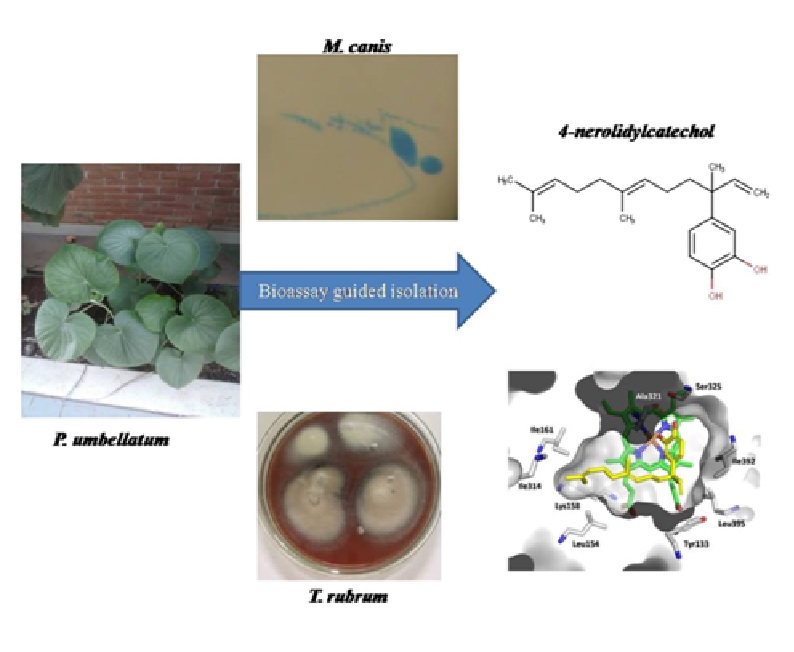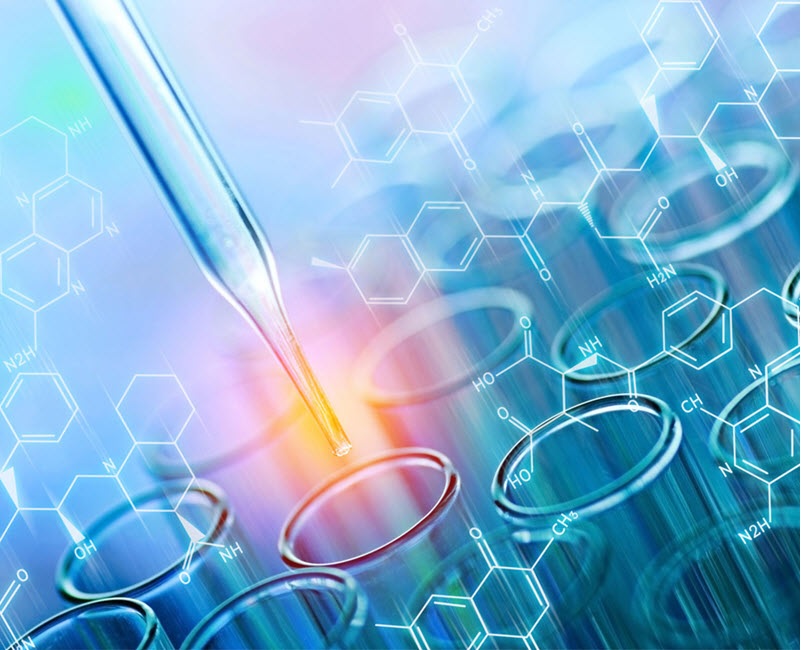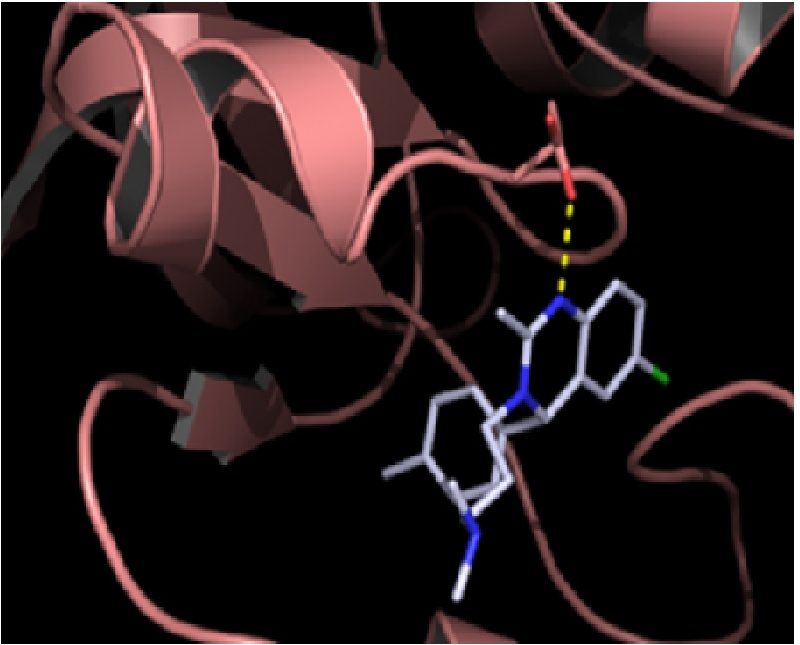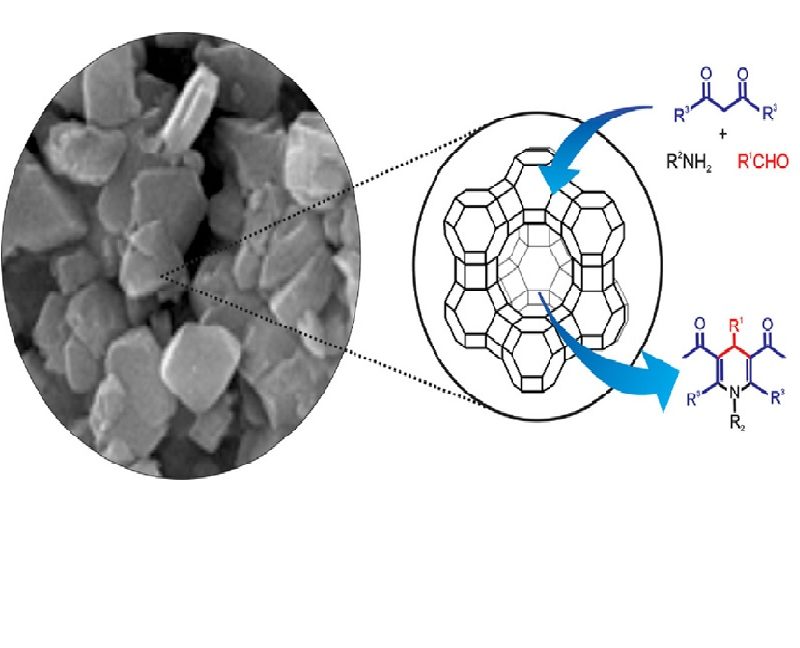
Authors:
Freitas, Jolindo A. [1, 2] ; Sorrechia, Rodrigo [1] ; Politi, Flavio A. S. [1] ; Santos, Andre G. [3] ; Rodrigues, Edvanio R. [1] ; Santos, Lourdes C. [4] ; Fusco-Almeida, Ana M. [5] ; Oliveira, Andrew A. [6] ; Guido, Rafael V. C. [6] ; Pietro, Rosemeire C. L. R. [1]
Abstract:
Dermatophytosis is a dermic disease caused by fungi. The aim of this study was to search anti-dermatophyte bioactive compounds in Piper umbellatum leaves. Cytotoxicity evaluation was performed against MRC-5 and HepG2 as a selectivity parameter. Crude ethanol extract presented MIC value of 39.1 mu g/mL against M. canis and no cytotoxicity to Hep G2 (human liver cancer) and MRC-5 (normal lung fibroblast). 4-nerolydilcatechol was isolated from P. umbellatum ethanolic extract. MIC values for 4-NC were 7.6 mu M to M. canisand 15.6 mu M to Trichophyton rubrum. 4-NC presented activity against M. canis14 times lower than to MRC-5 (non-tumoral human cell line), which suggest selective activity for this fungus. Molecular modeling suggests 4-NC could bind to CYP51, present in lanosterol synthesis, blocking fungi development. In conclusion, P. umbellatum crude ethanol extract and 4-NC demonstrated high and selective in vitro antifungal activity. {[}GRAPHICS] .
1 Institute of Chemistry, Department of Organic Chemistry, São Paulo State University (UNESP), Araraquara, SP, Brazil
2 School of Pharmaceutical Sciences, Department of Natural Principles and Toxicology, São Paulo State University (UNESP), Araraquara, SP, Brazil
3 School of Pharmaceutical Sciences, Department of Drugs and Medicines,, São Paulo State University (UNESP), Araraquara, SP, Brazil
4 Institute of Chemistry, Department of Organic Chemistry, São Paulo State University (UNESP), Araraquara, SP, Brazil
5 School of Pharmaceutical Sciences, Department of Clinical Analysis, São Paulo State University (UNESP), Araraquara, SP, Brazil
6 São Carlos Institute of Physics, University of São Paulo (USP), São Carlos, SP, Brazil
Link to article: https://www.tandfonline.com/doi/full/10.1080/14786419.2019.1569656







